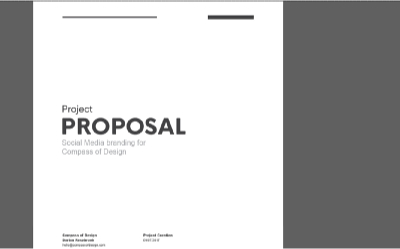I thought long and hard about using clip-art for this week, decided not to…
It always seems like you have to climb over mountains to get your first paid gig as a freelance designer.
Sometimes, if you’ve been posting so much personal design work that someone comes by and wants to pay you to do something similar for them, you may be confident enough to take them on as a client.
But that doesn’t always mean you’ve got it all figured out.
After I had released last week’s topic about if you should freelance, I was talking again with Sadie who sparked the whole thing. She was concerned about how to get paid, or as she asked it 😝:
“How do I actually charge them for the work though?”
You’re never going to get the system right the first time.
And I hope that you are okay with that.
The process is never bullet-proof, and takes years of confidence and knowledge about where the choke points are in the project flow.
Everyone seems to do payments differently, but there are several things that people do in order to get paid by the clients they are working with
You can find the workflow of designers all over the world who talk about how they charge their clients.
The workflow choices are something like this:
Pricing Models: retainers, hourly, flat-rate, value-based, consulting-sprints, blocks of time, and the list continues. Maybe I’ll talk about this in a future newsletter (which would be smart to get on if you like guides like this and a junk-ton of resources for design. lol)
Invoicing Models: 50/50 payments, 100% upfront, billing on deliverables, billing on milestones, billing with proposal/contract/invoice trio.
Acceptable payment formats: Cash (not 100% recommended because there is very little paper-trails), Bank Check, Bank Wire, Internet Credit/Debit Processing, Electronic ACH Payments, Barter, Pro Bono Publico, Exposure (shudders)
Time Frames: What is acceptable to you and your business for how long an invoice can remain unpaid until you charge any fees (if you choose to).
Enforcement: Think of any legal action which you may have to use or enforce to protect yourself, your business, and your client’s interests.
My workflow
How I choose to bill my clients may be similar to most professionals. I don’t have it down 100% especially since I am changing my business model and project pricing structure, but this flow has worked for me.
I am working on implementing value-based pricing within my business. It’s not your typical flat-rate pricing, though the final price is a static price. I am currently sharing a lot about how to do value-based pricing within our design community.
So my model:
I charge clients on a value-based pricing model.
I invoice my payments during the project’s proposal and contract. They have the option of paying me 100% upfront for the work (which people have chosen), or 50% before starting the job, and 50% before sending over the deliverables.
I accept checks for local clients. Local which means within driving distance. I have used Paypal in the past with clients, but as my project fees go up, I may need to switch to bank wires or some other electronic transfer. I still invoice for Pro Bono clients, and I even invoice for barter clients, but I show the invoices as “paid through alternate means.”
I used to relax my project time frames which have come and bit me in the butt before. Meaning I didn’t get paid at the end of the job. Now I give a short time frame of 5 business days (which may still be too generous), and then late fees of 3% non-compounding per day come into effect.
I’m still working out the legal action I would take for enforcement, but know that sometimes it’s better to appease than to headbutt. Reputation is a thing, and you don’t want to be seen as a tyrant, and you don’t want to be seen as a push-over.
There are plenty of tools out there to help you create invoices for your clients. I choose to make my own, which will be available from the Compass website (I still need to finish that. Where do I find 24 more hours in the day? haha)
For invoicing and accepting payments, you have
A bunch of these services charge a small percentage of each transaction to help them stay afloat. It’s common for that fee to be around 3% of the transaction amount. Which if you’re running a business, is usually able to be deducted from taxes later on.
I’d consult somebody though before doing anything with that.
Others may charge on a monthly subscription model only, which may save you some of those transaction fees (or add to them if the processing payment system also charges a fee. That’s the downfall of middlemen software.)
For proposals, you can find those all over the internet.
Places like Creative Market, Sellfy, and other design resources sites have all sorts of them.
We sell these same types of products as well on our Compass of Design store.
And even my friend is creating better ways for designers to get paid.
You can follow his process with his project called Payment Link and get on his waiting list for access. Stuart has a lot of experience with helping independent designers getting paid with projects he’s been a part of.
If you decide that you want to make your invoice yourself, make sure that your invoice includes:
Your logo on there
An invoice number, because you need to find your client’s invoice should they very conveniently “lost the invoice”
Both your business info and the client’s
A cost breakdown (however you choose to structure that)
Taxes (always check your financials on your own or with professional help because sometimes services have their own tax rules)
Total amount due
Payment terms (when things are due, how many invoices are left, etc)
Payment options (though this can be outlined in the proposal/contract, you can never overcommunicate)
Here’s the actual page that I include in the proposal that I send over when we’re about to start a project

So some general rules:
Never start work on a project that you haven’t gathered the upfront deposit fee.
Never ever send files over before you receive the final payment, and that the payment clears. You can’t get the files back if you’ve already sent them and they don’t pay.
Never do work without a contract that they’ve signed, that you understand or are controlling the terms of the project.
Be over-communicative, if a client has to call you and ask about something, there’s probably a gap somewhere in your process and you aren’t communicating what you’re doing well enough to them. This can make projects turn out ugly in the end if there were expectations from the client and expectations from the designer that weren’t communicated or aligned.
Keep your income and expenses from freelancing separate your personal expenses. There are options out there for a second account(whether it’s a business account or personal, you’ll have to sit with someone who understands finances to get actual advice) and this will remove tons of headaches when it comes to taxes and business stuff.
Get professional help with your finances. Whether you hire someone or use a computer product/service/app, it’s one less headache of all the hats you have to wear as a freelancer.
Stick to your process and guts. Don’t let people muscle you around because they’re a business. You have as much say as they do about how you handle your invoices.
So there are bound to be tons of questions you have that I could answer about payments. So if you have other questions that I haven’t answered for you already, shoot me a message and I’ll share what else I know about payments.
Hope this helps and I’ll catch ya next week. (:

Take another step towards learning more about design from other designers.
Come join other like-minded designers who are working at becoming masters of their craft.
Every week we go over ways to market yourself better by improving your design skills, your personal brand, and other topics to further develop as a great designer.
Our community registration opens up once a quarter, so get on the newsletter to stay updated!


